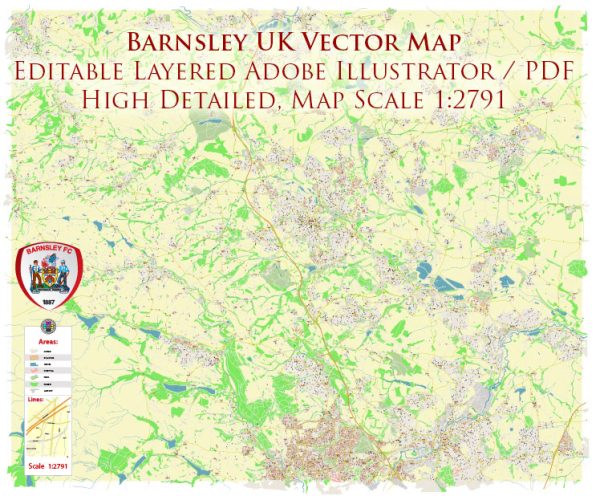The history of urban development in Barnsley, UK, is a fascinating journey that reflects the town’s evolution from a small market town to a significant industrial center and its more recent transformation in response to economic changes. Here’s a brief overview of the key stages in Barnsley’s urban development:
- Medieval Origins: Barnsley’s history dates back to the medieval period when it was a small market town. The town’s location in South Yorkshire, surrounded by fertile farmland, made it an ideal place for agricultural trade. The layout of the town was characterized by a central market square and narrow streets, which still exists in parts of the town today.
- Industrial Revolution: Barnsley’s urban development saw a significant transformation during the Industrial Revolution in the late 18th and 19th centuries. The town’s proximity to coalfields and its connection to the emerging railway network led to a rapid expansion of coal mining and related industries. As a result, Barnsley grew both in population and economic importance. The town’s layout changed, with the construction of new industrial areas, terraced housing for workers, and the establishment of numerous collieries and factories.
- Victorian Architecture: The Victorian era brought significant changes to the architecture of Barnsley. The town saw the construction of elegant public buildings, such as the Town Hall, which is a notable example of Victorian architecture. The town’s infrastructure improved, with the expansion of the railway network, which facilitated the transportation of goods and people. Barnsley’s industrial growth was driven by the coal and textile industries, and the town became known for its coal mines and weaving mills.
- Economic Decline and Regeneration: The decline of coal mining and the textile industry in the mid-20th century had a profound impact on Barnsley. The closure of many mines and factories resulted in high unemployment and economic hardship for the town. As the traditional industries declined, there was a need to diversify the local economy.
- Modern Redevelopment: In response to these economic challenges, Barnsley has undergone a process of urban redevelopment and regeneration. The town has seen investments in the revitalization of the town center, including the construction of modern shopping centers, cultural and leisure facilities, and improved transport links. The redevelopment has aimed to make Barnsley more attractive to visitors and investors while preserving its historical character.
- Cultural and Educational Growth: Barnsley has also invested in cultural and educational institutions. The town is home to the Cooper Gallery and the Experience Barnsley Museum and Discovery Centre, which showcase the town’s history and heritage. Educational institutions like Barnsley College and the University Campus Barnsley have contributed to the educational and cultural enrichment of the town.
Barnsley’s urban development reflects its journey from a medieval market town to an industrial powerhouse and, more recently, a town that is adapting to economic changes. Today, it combines elements of its rich history with modern amenities and services, making it a diverse and evolving urban center in South Yorkshire.


 Author: Kirill Shrayber, Ph.D.
Author: Kirill Shrayber, Ph.D.